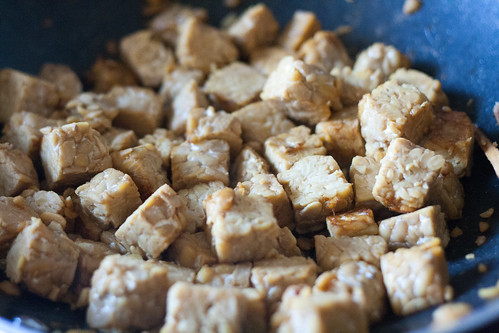Bacterial Good Guys & Where To Find Them
Maybe you’ve seen advertisements for yogurts and other foods that contain bacteria called probiotics and wondered, “what exactly are these ‘friendly’ bacteria, and why would I want them?” It is a little odd to think of bacteria as being good for us. After all, bacteria and other “germs” are generally something we endeavor to keep out of our food, but not all bacteria are created equal.

What are probiotics?
Probiotics is a collective word (translated as “for life”) that refers to a variety of types of live, “good” bacteria that, when consumed in adequate amounts, confer health benefits. Probiotics are most commonly from two basic groups: Lactobacillus and Bifidobacterium. (On food labels these groups are frequently abbreviated with just a capital letter L. or B. and then another scientific name that identifies the species of the particular bacteria, such as L. Rhamnosus.) Both lactobacilli and bifidobacteria live in healthy human intestines, where they perform a variety of functions whose end results make the gastrointestinal tract less hospitable for “bad bacteria.”
What do probiotics do?
Fermented dairy products are traditional foods, and have long been regarded as health-promoting by many cultures. Maybe your own grandma extolled the health virtues of drinking buttermilk? Indeed, scientific research does suggest that probiotics are beneficial for most people. Specifically, according to the National Institutes of Health (NIH), the consumption of probiotics may:
- boost immunity
- help treat certain gastrointestinal diseases and conditions
- prevent or slow the development of certain cancers
Scientists have also identified some of the methods by which probiotics may work to beneficially impact human health. For example, taking antibiotic medication can destroy many “good” bacteria and promote an imbalance of bacteria in the intestinal tract, which can cause a number of tummy troubles. Consuming probiotics during antibiotic treatment helps restore a healthy balance of bacteria to the intestines. Some research indicates that probiotic consumption impacts not just the numbers of “good” bacteria in our systems, but also the manner in which these bacteria function. Researchers acknowledge that there is still much to be learned about exactly how probiotics function in our bodies, and research is ongoing.
Where do I find probiotics?
Probiotic bacteria are frequently associated with dairy products, especially fermented dairy products. Manufacturers produce these products by adding live probiotic bacteria cultures to the food and letting the bacteria grow to high levels. The cultures have dual roles in these foods—changing the milk product to a fermented food, and also contributing beneficial bacteria to the digestive system of the person who consumes the food. Probiotic bacteria can also be found in other fermented and non-fermented foods. Supplements containing live probiotic bacteria are also available. It’s important to keep in mind, however, that when you get your bacterial good guys in food, you also reap the extra benefits of protein, calcium, vitamins, minerals and other beneficial compounds that supplements do not provide.
Foods that provide probiotics
- Fermented foods
- Buttermilk
- Some cheeses (Gouda, cottage cheese, certain brands with added live cultures)
- Kefir
- Yogurt
- Miso
- Tempeh
- Sourdough bread
- Pickles
- Fresh sauerkraut
- Kimchi
- Natto
- Soy sauce
- Honey
Other foods that may contain added probiotics
- Juices
- Powdered drinks
- Bottled smoothies
- Cereals
- Granola bars/energy bars
- Frozen desserts/yogurts
In Probiotic Primer (Part 2), we’ll take a closer look at the research into specific health benefits that probiotics may provide.